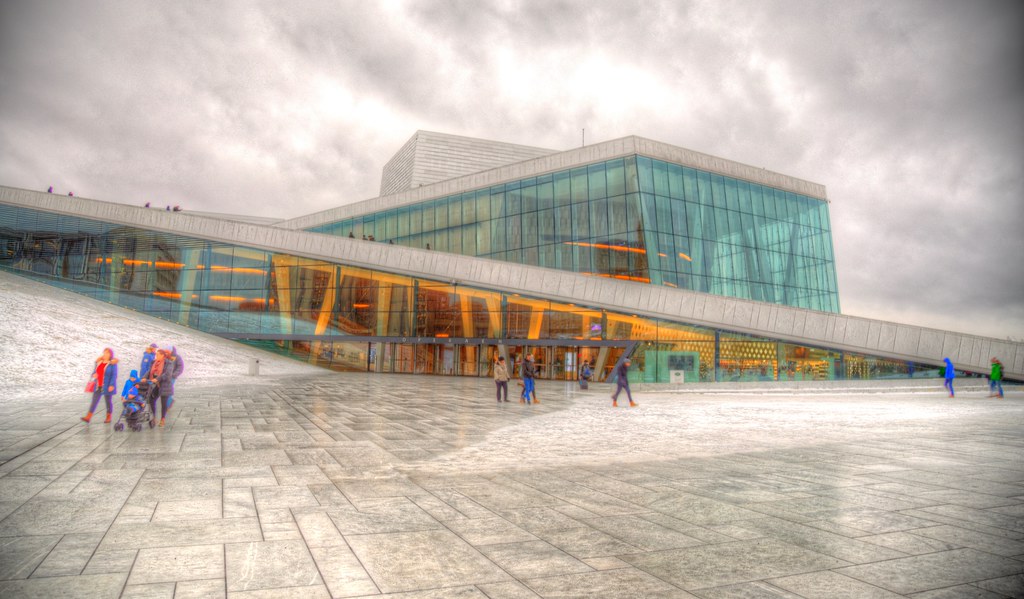The relationship between architecture and music is a dynamic interplay that has significantly influenced the evolution of musical expression across various genres and historical contexts. David Byrne, a prominent musician and cultural commentator, sheds light on this connection, exploring how different environments shape the music created and performed within them. For more on this, you can check out Byrne's insights in the article discussing his TED Talk.

Byrne’s reflections cover his own experiences as a performer transitioning from the iconic CBGB venue to the prestigious Carnegie Hall. These contrasting spaces highlight a fundamental question: how does the venue influence the music being performed? The acoustic properties and overall ambiance of a location can dramatically alter the sound and style of music, fostering innovation that reflects the context.
Throughout history, musical composition has evolved alongside changes in architectural design. For example:

This illustrates how specific architectural features can dictate the musical experience, prompting artists to adapt their sounds and styles accordingly. For an in-depth look at the evolution of these influences, you can explore research on music and human social capability.
Byrne notes that contemporary listening experiences have been transformed by personal devices like iPods, shifting the focus to intimate soundscapes. In this modern context, musicians may be inspired to design their compositions around these personal settings, further blurring the lines between the environment and the art form.
 Christie Chambers' story.
Christie Chambers' story.
By posing thought-provoking questions about the relationship between music composition and spatial design, Byrne challenges artists to consider how much of their creative process is influenced by the environments in which they find themselves. In doing so, he invites audiences to reflect on the potential for architectural spaces to serve as frameworks for artistic inspiration.
Overall, Byrne’s insights underscore the vital role architecture plays in the evolution of music, revealing a reciprocal relationship where both disciplines inform and enrich one another. This exploration of the intersection between architecture and music not only enhances our understanding of artistic expression but also highlights the profound impact that physical spaces can have on the creative process. For further reading, you might delve into The Sound Reinforcement Handbook or look at the evolution of music practices at the Institute for Music Leadership.
In the realm of architectural acoustics, comprehensive studies such as "Architectural Acoustics: Principles and Practice" play a pivotal role in illustrating how the design of spaces can profoundly impact musical performance and experience. This book delves into the principles of sound behavior within architectural confines, emphasizing the significance of material choice, room shape, and surface treatments in optimizing acoustic quality. By exploring the intricate relationship between sound and space, architects and designers are better equipped to create venues that enhance musical clarity and richness. Such insights not only serve modern concert halls but also inform a variety of settings, from intimate music clubs to expansive auditoriums, showcasing how thoughtful architecture can elevate the auditory experience and, consequently, the evolution of music itself. This aligns with the broader narrative of how environments can shape artistic expression, thus fostering innovation in musical genres and performance practices.
In exploring the intersection of architecture and music, one illuminating resource is "Modern Architecture: A Critical History" by Kenneth Frampton. This comprehensive volume not only traces the evolution of architectural styles but also highlights how these aesthetic movements influenced the acoustics and design of performance spaces. Frampton’s insights reveal that innovations in architecture have significantly shaped the environments in which music is created and experienced—be it the soaring cathedrals of the Gothic era that amplified choral harmonies or the minimalist concert halls designed for optimal sound distribution. By understanding the critical historical context presented in Frampton's work, readers can appreciate how architectural advancements have fostered new musical forms and practices, ultimately facilitating an evolution in musical expression that resonates through both visual and auditory art forms.
Before you go, if you’re as fascinated by the symbiotic relationship between architecture and music as we are, why not stay connected and dive deeper into the world of creative interplay? We love sharing stories and insights just like this one on our social media channels. You can find captivating visuals and more behind-the-scenes content on our Pinterest boards and stay updated with our latest posts by following us on Instagram. If you're looking for quick updates and thought-provoking discussions, don't forget to check out our X profile. And for a blend of everything, join our community on Facebook. We’d love to connect with you and keep the conversation going!
